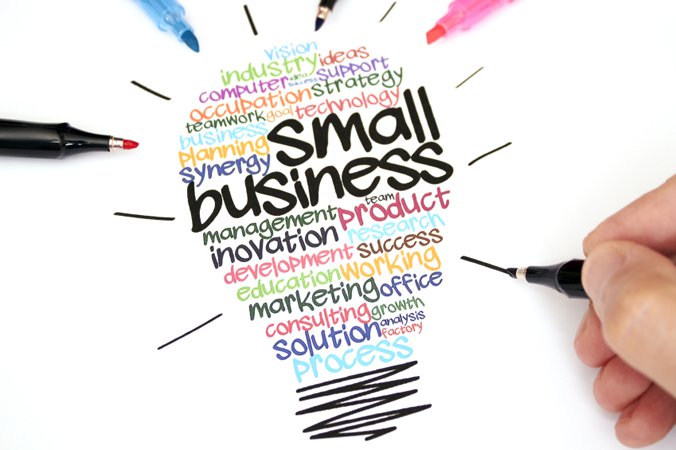Article Update: How to start a Nigerian business with (almost) no money

Article Update: VC Investor list 9 reasons why most Nigerian Startup can’t get funding
October 27, 2017
Nigeria Update: FBN Holding posts N439.2 billion gross earnings in Q3
October 27, 2017Coming up with a great idea for a business isn’t exactly an easy task, because a lot of great ideas are already being executed and a number of seemingly good ideas don’t actually satisfy a need that people have. But once in a while, you get that little spark and come up with a great idea that genuinely solves a problem that people have. Then excitement sets in, maybe because your idea is legitimately revolutionary or you’re just fascinated with the idea of launching and growing your own enterprise. But there’s one little hurdle in your way:
You don’t have much money.
“so how do we solve this problem?”
well…with the power of bootstrapping.
Bootstrapping is the process of starting a business with little capital and no funding from outside sources. So, for instance, if you were planning on starting a company as a consultant or freelancer, you could reduce your business expenses to make sure you could fund it on your own, by taking little steps like being the sole employee at the start to avoid having to pay other employees or working from home so you don’t have to pay for office space.
I highly recommend bootstrapping for startups (even if they have access to a lot of money) because it is the best way to test out your business in an efficient manner. Bootstrapping invokes the idea of a “warmup” period for your business; instead of going into full-fledged business mode, you’ll start with just the basics, see how you customers respond and build on that.
“so what steps do i take to start bootstrapping my business?”
Step 1: Build your business idea around what you already know / what you can already do
This is a pivotal first step for building a business with limited funds. Instead of venturing off into uncharted territory, make sure that you build your business around skills you possess and knowledge you have. The less you have to rely on outside sources, the cheaper it will be for you to begin.
For example, if you are good at cooking food, you could start a catering service for events, like 12 Baskets Food Ltd. If you are good at offering relationship advice, you could start a blog where people could come and share some of their problems and you could help solve those problems like Oloni.
Although it is important to start from what you already know / what you can already do, it is also equally important that your business idea actually solves a problem/satisfies a need that people have. The easiest and quickest way to fail is to start a business on an idea that has no market demand.
Step 2: Figure out how much you need to start and maintain your business
Sadly, there are inevitable costs involved in any business, so the goal here is to find out the lowest amount of those necessary expenses you have to incur to make your business work. In order to achieve this goal, you’ll need to outline the basic requirements of your business, then allocate costs to those requirements.
For example, DailyKobo is an advisory platform that my partners and I started to offer personal finance, career development and entrepreneurship advice to young Nigerians who need it. The minimum requirements to start the DailyKobo were:
- Writers to provide quality advice
- A website to use as an advisory platform
- Social media accounts to share links to our website
Because we built the business idea around things we could already do / already knew (see step 1), we didn’t have to start by paying for writers or a web developer, we could do those things in-house. But we had a slight problem with social media because although social media accounts are free to create, we didn’t have the manpower to constantly share posts on all social media platforms. So, we automated the process by using a free app called Buffer, which allows us to efficiently schedule posts ahead of time.
As a result, all we had to pay for were:
- Web hosting: £88 per year (₦42,000)
- Domain name (registration/renewal): £26 per year (₦12,000)
This came to a total of about ₦54,000 per year, which represented the lowest amount of necessary expenses we have to incur in order to make our business work.
There’s no uniform “startup” fee for building a business; different businesses have different needs and hence, require different amounts of capital. But it’s important that you streamline your business idea and start off with the bare essentials required to provide value to your customers.
Here are a few tips to help you reduce how much your business might cost:
- If you need to build a website, you can make use of free web tools like Squarespace, WordPress and Wix. There are numerous tutorials on YouTube that can walk you through the process of creating a simple website using any of those tools.
- If you need a logo, you can use Logomakr, which is a free logo making tool.
- If you need affordable company registration in Nigeria, feel free to contact Barrister Awoniyi through this email – awoniyideji@yahoo.com.
Step 3: Clarify how you can fund your business without personally going bankrupt
This is where things get practical. After clarifying the total cost for your business, you’ll have to clarify how you are going to fund it. This step usually requires serious management of your personal finances to ensure that you can afford your business and still maintain a decent lifestyle.
What is required in this step is a personal budget that will help you track your spending, ruthlessly cut unnecessary expenses and deliberately spend money on things that matter to you and your business.
Step 4: Outline where your first customers are coming from
The next step involves thinking about how your business is going to get its first customers, and I don’t mean theoretical customers. You’d need to literally outline where your first customers will come from, and if possible write down their names. The goal in this step is to make use of free/cheap services to reach out to people, so that you can identify who your niche customers are and focus on satisfying their needs.
“it’s better to build a business that a small number of people love than to build one that a lot of people merely like, because it hard to expand your business on weak enthusiasm” – sam altman, president of y combinator
For example, if you are thinking of starting a law firm, you could use free online survey platforms like Survey monkey, to find out what services are most important to your potential customers, what their preferred timelines are for receiving responses to their enquiries and how much they would be willing to pay for your legal services. From the feedback you get from those survey questions, you could start identifying ways to cater to their specific needs.
Step 5: Build the first version of your business
Once you know how your business is going to be funded and you know exactly where (and how) you intend to get your first customers, the next step is build the first version of your business, which is also called – A Minimum Viable Product (MVP).
Eric Ries, an entrepreneur and author of ‘The Lean Startup’, described an MVP brilliantly:
“the minimum viable product is that version of a new product (or service) which allows the founder(s) to collect the maximum amount of validated learning about customers with the least effort”
The purpose of your MVP is to see if your idea works in reality and what can be done to make it better. For example, I mentioned the Buffer app as an efficient way to automate and schedule social media posts ahead of time. When Leo Widrich (the founder of Buffer) started, he limited his MVP to a two-page product that only allowed you to schedule tweets.
The purpose of your MVP is to see if your idea works in reality and what can be done to make it better. For example, I mentioned the Buffer app as an efficient way to automate and schedule social media posts ahead of time. When Leo Widrich (the founder of Buffer) started, he limited his MVP to a two-page product that only allowed you to schedule tweets.
Then tweeted to see if people would be interested in his product. Early response to his tweets indicated that people would use the app. The next question he asked was: would they pay for the app? The answer was “yes” — enough people were clicking on paid options. From there, Leo invested the time and money to build his MVP into what has become one of the most popular social media scheduling apps.
The MVP is also important because if your target audience don’t take to your idea, you could pivot and move your business in a different direction without having wasted too much money.
“in life there are no ls, only lessons”
For example, when YouTube started in 2005, it launched its MVP as an online dating site, where users could upload videos introducing themselves and talking about things they were interested in. Unfortunately, or perhaps in hindsight – fortunately, that idea didn’t take off so the founders pivoted YouTube to become a more general video-sharing site. That change in business model was a huge success and YouTube was eventually sold to Google in 2006 for $1.65 billion.






